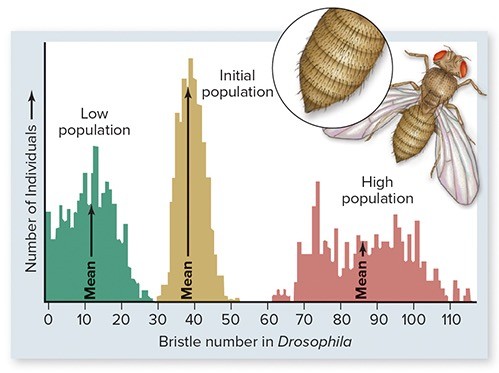Suppose that an elephant with the genotype EEFfggHh reproduces with an elephant with the genotype eeFFGgHh. What is the probability that a baby elephant (called a calf) would have the genotype EeFFGghh?
A) 1/16
B) 1/32
C) 1/64
D) 1/256
Answer: A
You might also like to view...
Which molecules are essential components of tight junctions?
A. cadherins and connexins B. cadherins and integrins C. claudins and integrins D. cadherins and claudins E. connexins and claudins
The rubeola virus contains
A. double-stranded RNA. B. single-stranded DNA. C. double-stranded DNA. D. single-stranded RNA.
Briefly explain how play behavior might have survival value and thus be affected by natural selection
What will be an ideal response?
In the laboratory, fruit flies (Drosophila) were artificially selected for the number of bristles on their bodies. One population (R) was selected for low numbers of bristles, a second population (S) for high numbers of bristles. After 35 generations (about 1 year's time), the two populations R and S were studied. Researchers found
After 35 generations (about 1 year's time), the two populations R and S were studied. Researchers found
A. a huge increase in S, a huge decrease in R, with no overlap whatsoever. B. no change was seen; it's much too soon. C. a vast, overlapping range of bristle numbers was seen. D. a slight increase in bristles in S, a slight decrease in R, with a little overlap in the middle ranges. E. some slight increase of bristle numbers was already evident.